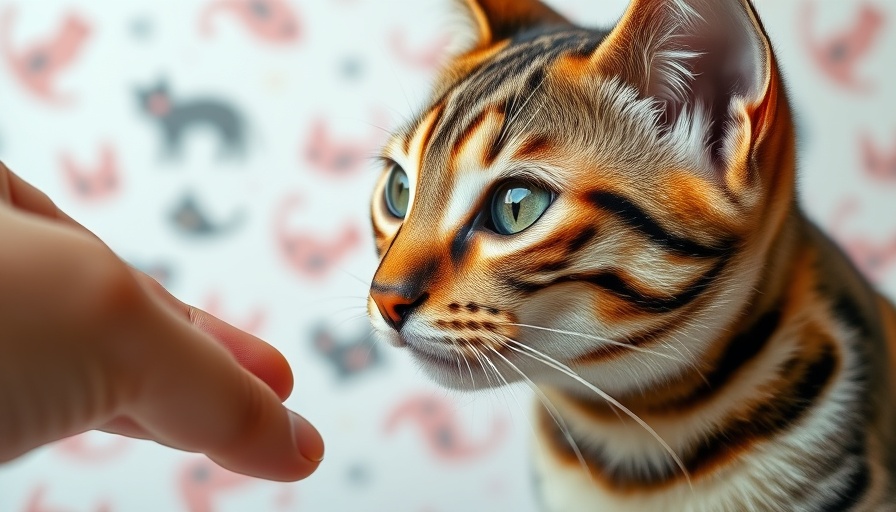
Your Cat's Nose: The Ultimate Recognition Tool
Have you ever paused in the warmth of your home to notice your cat hesitantly sniffing your hands or clothes before snuggling up to you? This seemingly simple act holds profound significance in a cat's world. Cats, unlike us, mainly rely on their sense of smell—immensely more refined than ours—to recognize their humans. In fact, they have over 200 million odor receptors in their noses, making their olfactory world rich and intriguing. Their ability to identify your unique scent not only reassures them of your presence but also reinforces the bond you share.
Connecting Through Scent: How Smells Shape Cat Behavior
Recent scientific studies suggest that cats spend considerable time sniffing their owners to confirm identity. This sniffing behavior tends to vary depending on the cat's emotional state. A calm cat may sniff briefly and move on, while a more anxious cat might return repeatedly to investigate the scent, indicating their need for reassurance.
When cats rub their cheeks against you or lovingly nuzzle you, they are 'scent-marking.' This behavior goes beyond mere affection; it’s a way for them to claim you as part of their territory and reinforce trust through shared olfactory communication. It’s heartwarming to understand that your cat expresses love and connection far beyond mere companionship.
The Emotional Nuances of Sniffing
Remarkably, research also reveals that cats use different nostrils to discern various types of scents, with the right nostril engaged when encountering unfamiliar smells and the left nostril used for familiar ones. This intriguing behavior illustrates how cats transition between alertness and comfort based on the scents they encounter. It signifies emotional processing patterns that deliver insight into your furry friend’s moods and feelings.
Are Cats Really Aloof? Not Quite!
Common belief characterizes cats as independent and indifferent creatures, but their bonding process showcases a different narrative. For instance, the act of sniffing is not just part of a cat's instinct; it is a vital way of making emotional connections with their humans. Recognition through scent suggests that they keep mental maps of the scents associated with their owners, signifying their capacity for emotional attachment over time.
It’s fascinating to observe how a cat’s sniffing behavior changes in the presence of familiar versus unfamiliar smells. Cats who are highly bonded to their humans tend to show affectionate and relaxed behaviors, while those exposed to new environments may exhibit heightened sniffing behavior as they navigate their surroundings.
Understanding Your Cat's Personality Through Sniffing
It's not just about recognition; your cat's personality can shine through its sniffing habits. For example, a more curious or neurotic cat may exhibit persistent sniffing behaviors, while the mellower ones engage in occasional sniffs and explorations. The nuances of these behaviors can help pet owners better understand what their feline friends are feeling and how comfortable they are in various situations.
Bridging Connections: Tips for Engaging with Your Cat
As you build a deeper understanding of your cat’s habits, consider these actionable insights to foster a stronger connection:
- Engage their sense of smell: Use various toys and scents to encourage your cat to explore their environment further.
- Prioritize bonding time: Make a routine of gentle petting and safe spaces for your cat to feel secure and loved.
- Observe behaviors: Documenting your cat's sniffing patterns can unveil a lot about their comfort and emotional states.
Understanding cat behaviors through the lens of scent can vastly improve your overall experience together. Your cat’s approach to exploring its environment and recognizing you is a beautiful dance of communication that, when appreciated, creates a warm bond.
As your knowledge of your feline friend deepens, so will the trust between you. This shared language of scents fosters both emotional well-being and strengthens your relationship in ways that may surprise you. Become attuned to this rich world of olfactory signals, and you’ll uncover new dimensions of your connection with your cat!
 Add Row
Add Row  Add
Add 




Write A Comment